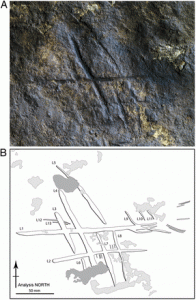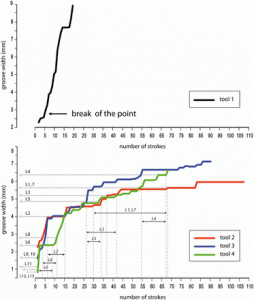The homo neanderthalensis, or the Neanderthal, went extinct around 40,000 years ago. The Neanderthals were closely related to humans, sharing most of the same DNA, with their latest common ancestor being between 200,000 and 500,000 years ago. When most people think of Neanderthals, they see the blundering cave man with limited cognition, similar to a very early hominin species or chimpanzees, very different than that of a modern human. More recent discoveries by archaeologists in Gibraltar challenge those assumptions.
The human species is distinguished from other life forms by our ability to use symbols. These symbols can be anything from markings on cave walls or early monetary systems. Archaeologists also look at various artifacts and symbols to evaluate the cognitive ability of archaic humans. Modern societies and populations are taken into account in order to give context to the artifacts. Because there are no living societies of Neanderthals to compare to the findings of archaeologists, other methods are used to provide context, like experimental archaeology.
In 2012 archaeologists found an engraving in Gorham’s Cave in Gibraltar, a British territory off the south coast of Spain. Gibraltar is known to be a long-term residence of Neanderthals and is home to a Neanderthal museum and many ongoing excavations. The engraving was of an incomplete cross-hatching of three and two lines. These lines are significantly different from the cracks and fissures of the exposed lime-dolostone of the cave.
The archaeologists then attempted to recreate the markings in the cave on excavated portions of the same rock from the same cave to learn more about the nature of the tools used. First they tried using a stone with a tip similar in size to the engravings, held it in place and scratched it back and forth to create a marking of the same depth. This method gave way to a marking that was rough and uneven with fringe on either end, which was not present in the engraving. They also discovered that the lines would not have resulted in a misplaced swing of a tool used to cut pigskin. The marking matched up best with lines created with careful incisions going in one direction.
They also needed roughly 200-300 cuts to create a line with the same dimensions as the markings in Gorham’s cave. This leads to the need to protect one’s hand and extensive knowledge of tools. The archaeologists conclude that “this discovery demonstrates the capacity of the Neanderthals for abstract thought and expression through the use of geometric forms.”
Maybe we don’t give Neanderthals the credit they deserve, and more research needs to go into challenging the idea that the cognitive ability of the predecessors of our species, and Neanderthals, are inherently lower than that of our own.
Further Reading:
- http://anthrojournal.com/issue/october-2011/article/neanderthal-cognitive-ability-and-technological-development
- http://www.bbc.com/news/science-environment-35595661
Sources:
- http://www.pnas.org/content/111/37/13301.full
- https://www.nytimes.com/2017/01/11/magazine/neanderthals-were-people-too.html
- http://www.smithsonianmag.com/science-nature/the-rock-of-gibraltar-neanderthals-last-refuge-42545293/
- http://www.bbc.com/news/science-environment-28967746
Images




My knowledge of this subject is that there is fossil and genetic evidence of interbreeding between modern humans and Homo neanderthalensis. Does the finding of the Lapedo Child, show that there wasn’t a very distinct difference of both species?
http://www.bristol.ac.uk/archanth/staff/zilhao/vast2007.pdf